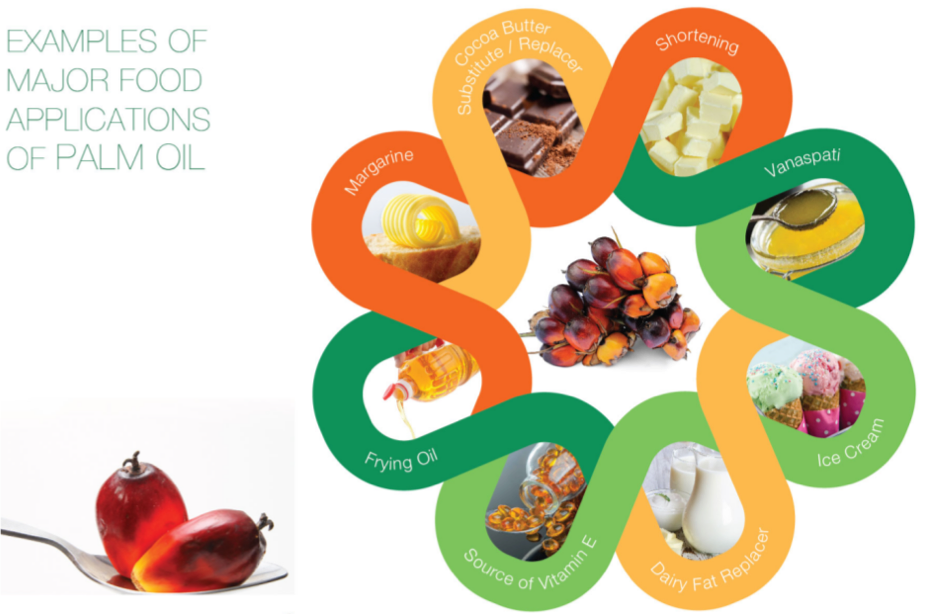Roles of dietary fats
 Palm oil is grouped under edible oils and fats cited by CODEX Alimentarius. Fats including palm oil help to improve flavours and aroma of meals and most importantly contribute to the feeling of satiety. With a caloric contribution of 9 kcal/g, fat is an important macronutrient that fulfills important body functions such as for maintenance of membrane functions and integrity, cellular growth, brain development, vision and transport of fat-soluble vitamins (A, D, E, K). The recommended optimum daily intake of fats is between 30%–35% of the total daily energy supply.
Palm oil is grouped under edible oils and fats cited by CODEX Alimentarius. Fats including palm oil help to improve flavours and aroma of meals and most importantly contribute to the feeling of satiety. With a caloric contribution of 9 kcal/g, fat is an important macronutrient that fulfills important body functions such as for maintenance of membrane functions and integrity, cellular growth, brain development, vision and transport of fat-soluble vitamins (A, D, E, K). The recommended optimum daily intake of fats is between 30%–35% of the total daily energy supply.
Food applications of palm oil
Among the various available sources of fats, palm oil is one of the top choices for food manufacturers due to its versatility and diversity in its applications.

Palm oil is available in different fractions, forms and characteristics.
- Palm olein is the liquid fraction of palm oil. On average, it contains 44% saturated and 56% unsaturated fatty acids. It is used as cooking oil for household use and in the snack food, canned foods and instant noodles, as well as in food catering and fast food preparations.
Attributes of palm olein:
Palm stearin has a higher solid fat content. It is suitable for products that require a higher solid fat content (SFC) and is a healthy alternative to partially hydrogenated vegetable oils, containing trans-fatty acids.
- Palm mid fraction has a comparable melting profile to cocoa butter and thus can be used as substitute. It is suitable for the manufacture of confectionery products (coatings, fillings, caramels and toffees) and as milk fat replacer for non-dairy creamer.
Palm oil is naturally free of harmful trans–fatty acids
Solid fats provide the desired texture for a variety of foods both in household use and food industry applications, which are not achievable with liquid oils. Traditionally, animal fats were commonly used. But as more scientific studies showed that animal fats with higher saturated fat content are possibly associated with higher heart disease risk, animal fats were replaced with partially hydrogenated vegetable oils (PHO). Although PHO offers similar consistency to animal fats with great versatility in terms of texture, it contains unhealthy trans-fatty acids. In some countries such as Denmark, the Netherlands and the USA, the use of solid fats containing trans-fatty acids in food industry has been put under strict regulations. As a matter of fact, CODEX Alimentarius Food Standards has prescribed regulation to eliminate industrially-produced trans-fatty acids. Palm oil is a natural substitute, free of trans-fatty acids, and furthermore it can mimic PHO, in many applications.
Why palm oil is so highly desirable?
- It can be easily blended with other types of fats and oils for food formulations.
- Palm oil blends can be customised for very specific applications.
- Palm oil contains natural antioxidants vitamin E tocopherols and tocotrienols.
- It is stable and not easily oxidised.
- Extends shelf life of food products.
- Palm oil is the most cost effective and competitively priced oil.
- Palm oil is non-seasonal and is available all year round.
- Certified sustainable palm oil is available for the food industry.
Prepared by : Sarafhana Abdullah

